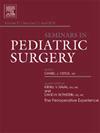Predicting and optimising outcome for biliary atresia
IF 1.4
3区 医学
Q3 PEDIATRICS
引用次数: 0
Abstract
Biliary atresia (BA) remains a disease of significant morbidity and mortality world-wide. Early and accurate diagnosis facilitates early intervention and improves outcomes. The gold standard in diagnosing BA is a liver biopsy followed by cholangiography, usually performed intra-operatively. Serum markers, like the aspartate aminotransferase-to-platelet ratio, matrix metalloproteinase-7 and several inflammatory cytokines have been recently investigated as non-invasive alternatives with varying degrees of success. Newer immunohistochemical analysis of liver biopsies, such as the expression of secretin receptors and Ki-67, from infants with BA have improved our understanding of the disease process and has shed a little light in predicting post-operative outcomes.
There is little standardisation in the care of BA post operatively, though administration of steroids, prevention and treatment of cholangitis with antibiotics and anti-viral therapy for CMV+ve infants are becoming universally accepted as treatment. Experimental stem cell treatments show promise although remain in the out-of-reach future for now in routine clinical practice.
This chapter aims to comprehensively describe recent knowledge on predicting the clinical outcomes of infants with BA, as well as optimising their care post operatively.
预测和优化胆道闭锁的预后。
胆道闭锁(BA)仍然是世界范围内发病率和死亡率很高的疾病。早期和准确的诊断有助于早期干预和改善结果。诊断BA的金标准是肝活检和胆管造影,通常在术中进行。血清标志物,如天门冬氨酸转氨酶与血小板比率、基质金属蛋白酶-7和几种炎症细胞因子,最近被研究作为非侵入性替代方法,并取得了不同程度的成功。新的肝活检免疫组织化学分析,如分泌素受体和Ki-67的表达,来自BA婴儿,提高了我们对疾病过程的理解,并在预测术后结果方面有所帮助。尽管对巨细胞病毒+ve婴儿使用类固醇、用抗生素预防和治疗胆管炎和抗病毒治疗正在成为普遍接受的治疗方法,但BA术后的护理几乎没有标准化。实验性干细胞治疗显示出希望,尽管目前在常规临床实践中仍遥不可及。本章旨在全面描述预测BA婴儿临床结果的最新知识,以及优化他们的术后护理。
本文章由计算机程序翻译,如有差异,请以英文原文为准。
求助全文
约1分钟内获得全文
求助全文
来源期刊

Seminars in Pediatric Surgery
PEDIATRICS-SURGERY
CiteScore
2.80
自引率
5.90%
发文量
57
审稿时长
>12 weeks
期刊介绍:
Seminars in Pediatric Surgery provides current state-of-the-art reviews of subjects of interest to those charged with the surgical care of young patients. Each bimontly issue addresses a single topic with articles written by the experts in the field. Guest editors, all noted authorities, prepare each issue.
 求助内容:
求助内容: 应助结果提醒方式:
应助结果提醒方式:


